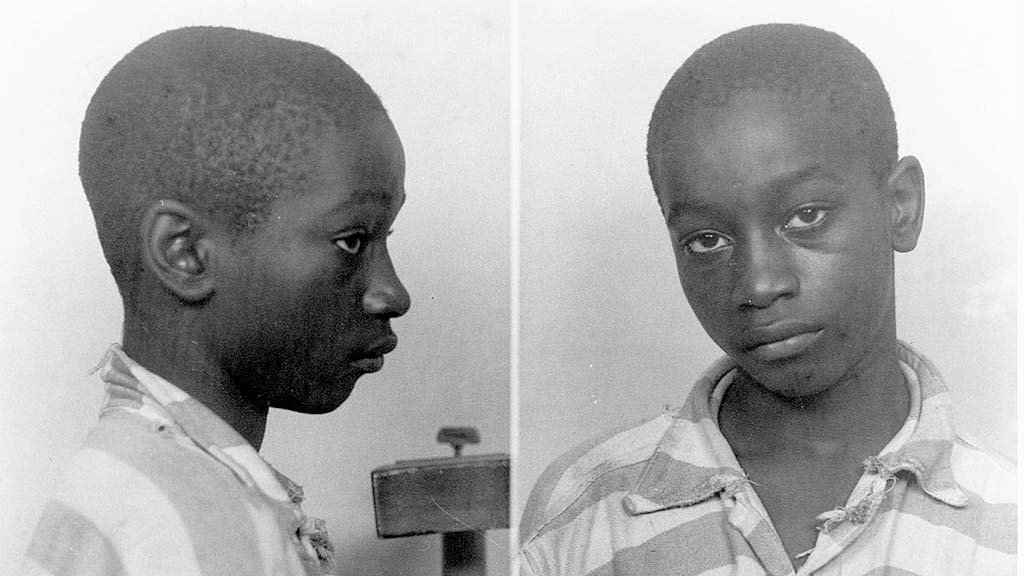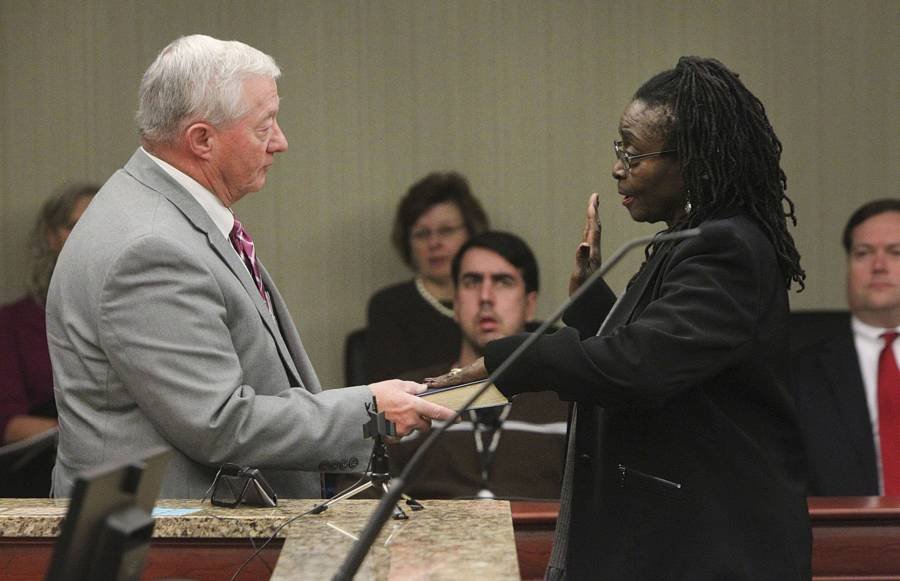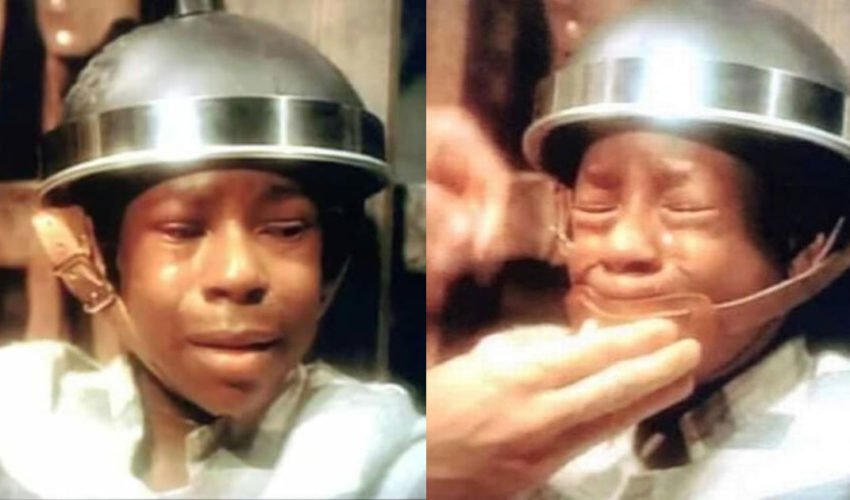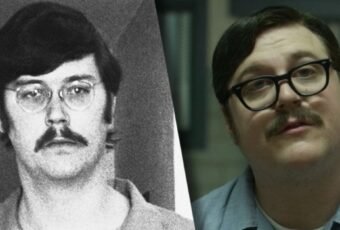14–year-old George Junius Stinney was convicted of murdering two white girls; he is the youngest person to be electrocuted by an electric chair. His conviction was overturned 70 years later.

Murders Of Betty June Binnicker and Mary Emma Thames
Nothing like that ever happened in the sawmill village of Alcolu. Alcolu was a place anchored by the lumber mill, where both men and women went to church twice on Sundays and green fields teemed with bolls of cotton every summer before bursting into clouds of white fuzz each fall.
According to official documents, on March 24, 1944 Betty June, age 11, and Mary Emma Thames, age 7 were riding their bicycles in the black part of Alcolu looking for flowers.
George Stinney Jr, a seventh-grader was out with his younger sister. When they saw Stinney outside, they stopped and asked if he knew where to find maypops, a local name for passionflowers.
Betty and Mary never made it home that day. White girls’ disappearance prompted hundred of Alcolu residents to come together and search for the missing girls, a search party of 100 to 200 men fanned out across town.
The Stinney family had gotten word of the missing girls that evening while attending a party in the neighborhood. George told his parents that he had seen them earlier and he left with his father to join the search parties.
The girls were found the next morning but sadly in a water filled-ditch with their skulls smashed in.
Later that day Medical Examiner A.C. Bozard performed an autopsy on the girls and determined their cause of death to be blunt force trauma. Bozard concluded that both the girls had been struck multiple times in the head with “a small round head about the size of a hammer,” both girls’ skulls were punctured.
When the law enforcement officers found out from witnesses that Betty and Mary were last seen talking to Stinney. The officers handcuffed him and Stinney was taken to the Sumter County Jail.
Geroge Stinney was interrogated for hours in a locked room with no witnesses or an attorney. The reports differed to what kind of weapon had been used.
According to the police reports, Stinney confessed to murdering Betty and Mary after his plan to have sex with one of the girls failed. The medical examiner reported no evidence of sexual assault to the younger girl, though the genitalia of the older girl was slightly bruised.
Arrest and Investigation
George Stinney and his older brother, Johnny were arrested on suspicion of murdering the girls. Stinney was not allowed to see his parents until after his trial and conviction. Jhonny was later released by the cops.
According to a handwritten statement, the arresting officer was H.S. Newman, a Clarendon County deputy, who stated, “I arrested a boy by the name of George Stinney. He then made a confession and told me where to find a piece of iron about 15 inches were [sic] he said he put it in a ditch about six feet from the bicycle.”
No confession statement signed by Stinney is known to exist. The 14-year-old claimed that the arresting officers starved him and then bribed him with food to confess.
After the arrest of George Stinney, his father was fired from the job and his family had to immediately vacate their company housing. The community and police threatened them to kill other children if they did not leave immediately.
The trial only lasted two hours
After 31 days of his arrest, George Stinney appeared at the Clarendon County Courthouse in downtown Manning, the county seat. George was dressed in jeans and a faded blue shirt.
George looked calm and “apparently little concerned”, a newspaper in Columbia reported.
The trial began at a Clarendon County Courtroom, where the Court-appointed defense attorney Charles Plowden did almost nothing to defend his client, Stinney.
Charles did not challenge the prosecution’s presentation of two different versions of what really happened. In one version, Stinney was attacked by the girls after he tried to help one girl who had fallen in the ditch, and he killed them in self-defense. In the other version, he had followed the girls, first attacking Mary Emma and then Betty June.
The most significant piece of evidence presented at the court was Stinney’s alleged confession, but there was no written record of him admitting to murders.
Trial prosecutors called three police officers and three witnesses: Reverend Francis Batson, who discovered the body of the two girls, and the two doctors who performed post-mortem examination.
The all-white jury took less than ten minutes to deliberate after which they found George Stinney guilty of first-degree murder, and the judge, Philip H. Stoll sentenced him to death by electric chair. No appeal was filed by his defense attorney and there is no transcript of the trial.
Between the time of his arrest and execution, his family was allowed to see him only once after the trial. But they were later denied to see him under the threat of lynching.
The Execution of George Stinney Jr.
On June 16, 1944, George Stinney Jr. walked into the execution chamber at the South Carolina State Penitentiary in Columbia with a bible under his arms.
The Bible he was carrying was later used as a booster seat because he was too small for the chair. Stinney was then restrained by his arms, legs, body to the chair.
In the final moments, his father was allowed to approach George to say his final words to his son.
When an officer asked George if he had any last words, but George just shook his head. A few moments later officials turned on the switch, 2400 volts surged through George Stinney’s body.
George Stinney Jr. was officially declared dead, 83 days after the murders of Betty June Binnicker and Mary Emma Thames.
For a long time, his grave was unmarked in hopes that anonymity will allow him to forever rest in peace.
Reopening of Case
George Stinney’s first-degree murder conviction was first appealed in 2014. George’s siblings claimed that he was pressurized and that he had an alibi: his younger sister, Aime, who was with him at the time of the murders.

In fact Stinney’s cellmate at the Sumter County Jail, claimed that Stinney always denied murdering Betty and Mary.
After a year of consideration, on December 17, 2014, Judge Carmen T. Mullen overturned Stinney’s first-degree murder conviction, stating that his sentencing was “cruel and unusual.” She wrote that there was “a violation of the defendant’s procedural due process rights that tainted his prosecution.”
Mullen wrote, “No one can justify a 14-year-old child charged, tried, convicted and executed in some 80 days,” concluding that “In essence, not much was done for this child when his life lay in the balance.
Blanche Monnier — The Woman who weighed only 55 kg because her mother kept her locked for 25 years.










